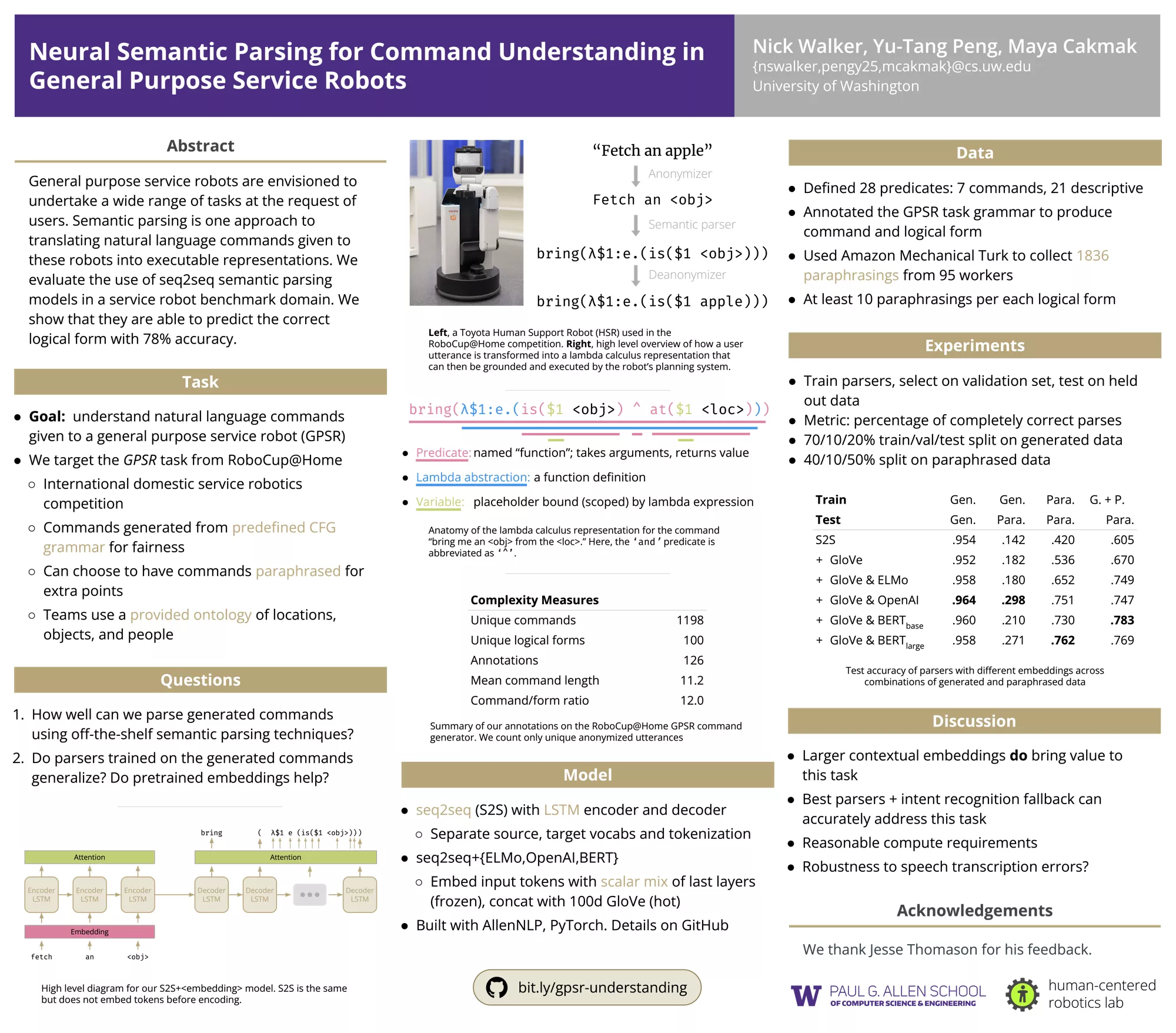Poster Templates
Some posters I’ve made using these templates. Looking at them shrunken down on a screen can be a helpful reminder of what a poster looks like from a distance.
University of Washington
These include UW’s brand colors as well as some nice compliments which you can use in supporting figures or call outs. Vector versions of the university branding as well as the CSE branding are included too.
CSE’s large format printers use 36 inch wide rolls, so these examples are based on that limitation. The type sizes are generous. They’ll still read well if you need to shrink a bit to fit A0.
- Landscape Template (41” x 36”)
Branding Guidelines
- University
- Paul G. Allen School (CSE login required)
FAQ
Why use Google Draw?
Because its collaborative editing works well, mostly.
Unfortunately, it doesn’t make it easy to properly include vector graphics, doesn’t let you add hyperlinks to the output PDF, doesn’t have many high-quality typeface choices available, and still suffers from some all around jank. But at least you won’t be juggling PowerPoint or Keynote files around, and it’s of course a far superior experience to using something like Beamer.
How do I use them?
- Open a link
- File > Make a copy
Once you need to work with the layout:
- View > Guides > Show guides
Guides legend:
- Red guides are for margin. Respect the margin.
- Magenta guides are for inter-column space. You can let images extend into this space, and bullets should hang out here.
- Green guides are for text bounds.
How do I make them look good?
- Stick to the given font sizes.
- Don’t waste ink with dark backgrounds; it increases the odds that something goes wrong with the print (e.g. smearing, streaking).
- Use the highest resolution assets you have access to.
- If you have a vector figure or logo, use this process to make sure it is inserted without loss of quality
- Use the correct university and department branding.
- Use your own brand, and not just the university’s. Don’t pull so heavily on the official brand guidelines that your poster looks like university communications.
- Use branding appropriate for the audience. If people aren’t likely recognize your lab logo or name, make sure the institutional branding is more prominent.


